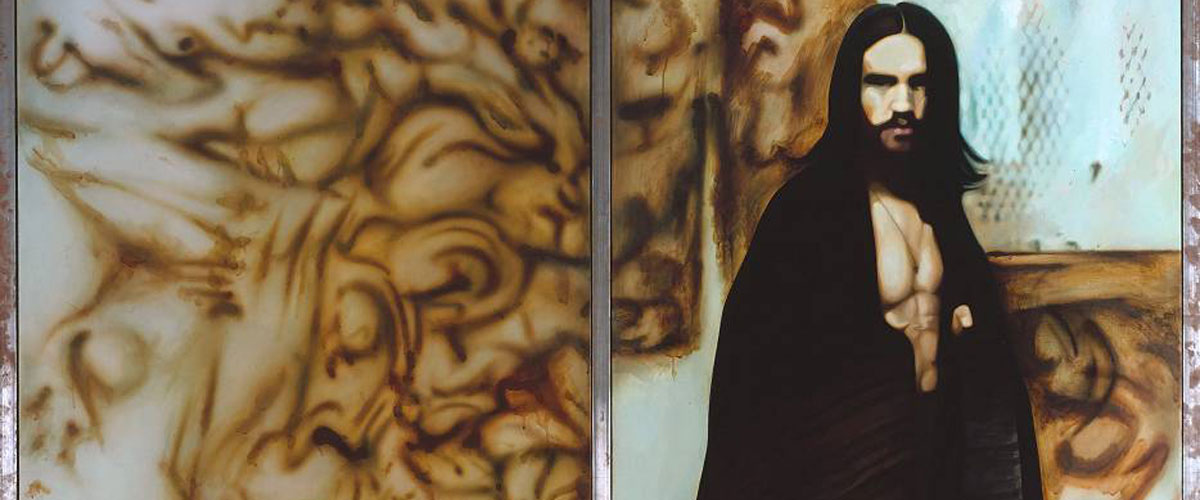As others pored over the papers released by the British government in relation to the hunger strikes of 1981, I was in Dublin to visit the Hugh Lane Gallery exhibition ‘Civil Rights etc.’.
Pride of place in the exhibition of works by husband-and-wife team, the late Richard Hamilton and Rita Donagh, is given over to the piercing portrait of a blanketman during the blanket protest.
The nobility and humanity of the hunger strikers is more evident in that single image by Hamilton than in a thousand documents, press briefings or books.
As someone who was a full-time activist with the H-Block-Armagh campaign in 1981, it strikes me as preposterous that anyone should suggest there existed on the outside a cabal of republican politicians who put an election before the lives of the prisoners.
Until now, I have skirted the debate, more in sadness at the anti-Gerry Adams obsession which drives much of this hate-filled discourse than in anger.
Nevertheless, it’s good to see that lie nailed in the same week that the oldest canard of all from the hunger strikes re-emerged in the British 1981 papers: that the family of hunger striker Raymond McCreesh insisted he continue his fast when he wanted to stop. The motivation behind both items of pernicious propaganda was to weaken the cause of justice and peace.
Perhaps now those whose anti-peace process fingerprints are all over this dirty work will desist.
In the meantime, those of us who revere the legacy of the hunger strikers could do worse than ensure this year, 2012, sees Richard Hamilton’s monumental work, The citizen, based on blanketman Hugh Rooney, and Rita Donagh’s piercing landscapes of the H-Blocks, get their first-ever outing in Belfast.
[hr]
Next Monday sees the start of a four-part series on risk, ‘Dúshlán’ (‘Challenge’) on TG4. The documentaries represent a new departure for the Belfast Media Group and hopefully will help create more jobs in our Gaeltacht Quarter.
For the first programme in the series, we dispatched Irish American Kevin McKiernan to Afghanistan to embed with Sergeant Séamus Ó Fianghusa, an Irish-speaking Brooklyn native whose mum hails from South Korea. I won’t be spoiling the ending by telling readers that Sgt Ó Fianghusa emerges unscathed from his tour of duty. Ditto Kevin McKiernan, though he was shot at – by US troops after his taxi ran a stop sign outside Bagram airbase. Fortunately, the shots were fired over the vehicle and, after waving a white handkerchief from the window of the cab, Kevin and his local taxidriver were allowed to proceed. Apparently, this type of incident is known as a “cultural miscue” in Iraq, where Kevin was also embedded. “I witnessed the killing of five Kurds at one roadblock by rival Kurds and often saw U.S. troops pointing loaded rifles at terrified Iraqis after they failed to understand English – even when the soldiers obliged them by screaming it louder.” All of which confirms my view that the most dangerous ‘profession’ in Iraq or Afghanistan is that of civilian.
[hr]
It was back to porridge at Belfast City Council last night with the first full meeting of the year – now viewable online via the Council site. If I have one prediction to make for the year ahead it is that there will be more progress made in cross-chamber and cross-community relationships than at any time in the past decade. As the black power leader Stokeley Carmichael put it, “We are the leaders we’ve been waiting for.” And I’m not applying that adage solely to the City Fathers and Mothers but to everyone who feels a surge of pride and vindication – as well as pain – when they recall the sacrifice of 1981.






